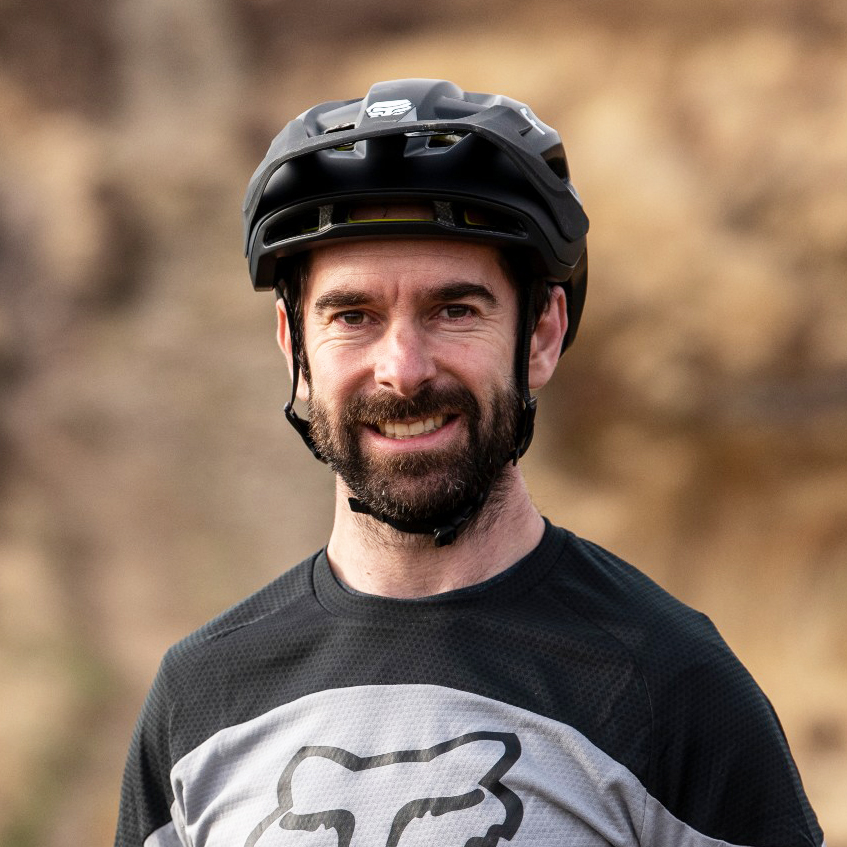For a long time, many people assumed a lighter bike was a faster bike.
Creating the lightest bikes possible has always been the goal in road and cross-country racing – and that tradition managed to seep its way into downhill racing, too, for better or worse.
Does anyone else remember pro racers running three out of six disc rotor bolts in a bid to shave some grams? Terrifying.
The idea of lightening up a downhill bike was to enable the rider to accelerate quickly from a standing start more easily and get back up to speed when exiting a slow corner without hassle.
And while there may be some weight (pun intended) to that theory, light bikes come with drawbacks too, especially in downhill racing.
So why are racers and mechanics slapping on big lumps of lead to these precision downhill machines?
The ebike phenomenon

Adding a motor and battery to a bike makes it heavy.
Take an enduro-style electric mountain bike, for example, and it’ll likely weigh in the region of 5-10kg more than a regular enduro bike.
Thankfully, the bulk of that weight is right where you want it – down low, in and around the bottom-bracket area.
While the extra mass can make bikes harder to manoeuvre and chuck around, the weight brings some benefits with it.
For a start, bulking up the sprung mass of the bike (everything supported by the suspension, including the frame, seatpost, saddle bars, stem, etc) and leaving the unsprung mass the same will alter the ratio between the two for the better.
This will help increase stability on the trail. In many cases, especially if you’re a lighter rider, it will help to overcome the friction within the fork or shock, providing a more sensitive, traction-rich feel. That extra weight can help maintain momentum, too.
For those who have ridden an eMTB, that sensation of having your wheels glued to the ground and a bike that’s hard to knock off course tends to be one of the first things you notice.
Quite simply put, compared to a lighter-weight bike, eMTBs are far less twitchy and way more stable.
And for downhill riding, those are very beneficial traits.
With so many top riders now training on eMTBs, they’re sure to have felt this, too, so it’s no massive surprise to see riders looking to emulate this feeling on their DH rigs.
Heavier, but how?

Adding weight to bikes isn’t exactly new. Geometron founder and suspension whiz Chris Porter was never one to follow trends, and has been experimenting with adding weight to various parts of his bike for years.
Aside from strapping lead to his head tube, he’s tied it down low, close to the bottom bracket, too.
The process isn’t particularly refined and doesn’t always look the nicest, but it works. Generally speaking, it’s as simple as cable tying or taping chunks of lead to the frame, exactly where you want the extra weight.
However, mechanics are getting smart to this and coming up with various ways to make it work.
This includes integrating the lead weights into the down tube frame protector of the bike, or at least fixing it to the protector as neatly as possible – think self-adhesive alloy wheel weights for cars and you can start to imagine how creative mechanics might get.

In terms of weight, the common figure most seem to settle on is around the 500g mark, although some riders will add more.
In fact, Jackson Goldstone, who has managed to win four successive World Cup races so far this year, adds a massive 1.8kg of lead to his Santa Cruz V10.
According to Steve Peat, Goldstone's bike weighs approximately 17.5kg without the additional ballast, meaning the extra weight takes it closer to the 19.5kg mark.
At only 64kg, Goldstone is one of the lighter riders in the elite male field, so this additional weight could help boost stability and maintain momentum a little more effectively.
In our recent podcast with Bernard Kerr, he mentioned the weight difference between the prototype Pivot Phoenix and the full-carbon production bike, which was around 1kg lighter.
The change took some getting used to, and he has since experimented with adding that weight to the production bike to mimic the performance and feel of the prototype machine.
And if you think this only applies to racers’ rigs, think again.
The new Orbea Rallon production bike (which uses the same frame for enduro and downhill) comes with three different removable weights, which bolt to the ‘Gravity Link’, enabling riders to add up to 600g in total.
Gearbox gains

For some, though, there’s no need to get creative with lead and cable ties.
With more teams running gearboxes than ever this year, the work has already been done for them and there’s no need to add ballast.
Just look at the Atherton A.200.G.
Not only does this sort of design place a chunk of weight in the right place to help create an incredibly stable ride, it also removes weight from the unsprung elements of the bike (in this case, there’s no cassette or derailleur), which should, in theory, boost suspension performance.
No diets in downhill

Overall, don’t expect to see downhill bikes getting lighter any time soon.
With the likes of Goldstone now riding a bike that’s in the realm of eMTBs (think along the lines of the Amflow PL Carbon) and proving it works for him, expect to see more slabs of lead bolted to down tubes soon enough.
With tracks seemingly getting faster, straighter and less technical, high-speed stability, suspension performance, momentum preservation and traction are everything. Lighter, twitchier bikes can’t deliver in the same way.
How much more weight we’ll see being hung off bikes in the future is hard to say, but the lead and cable ties seem to be here to stay.



